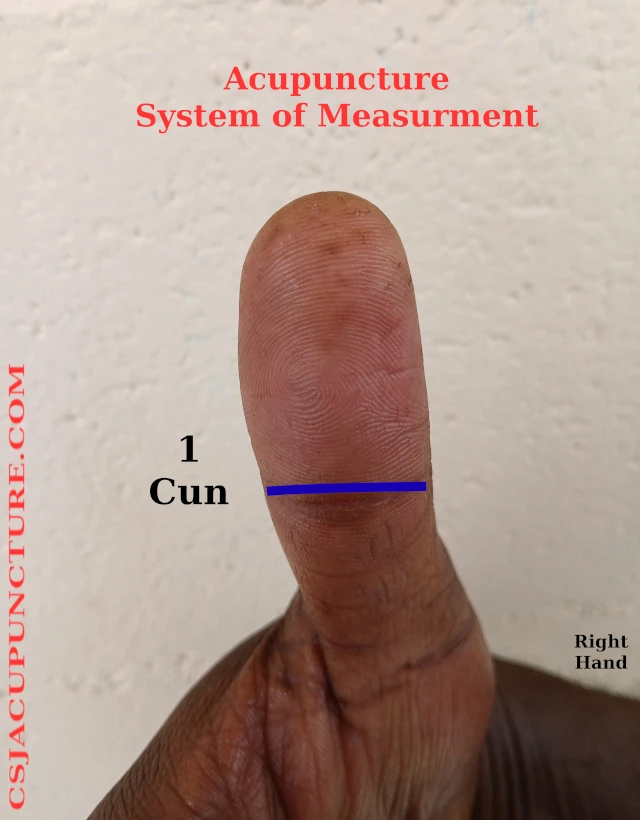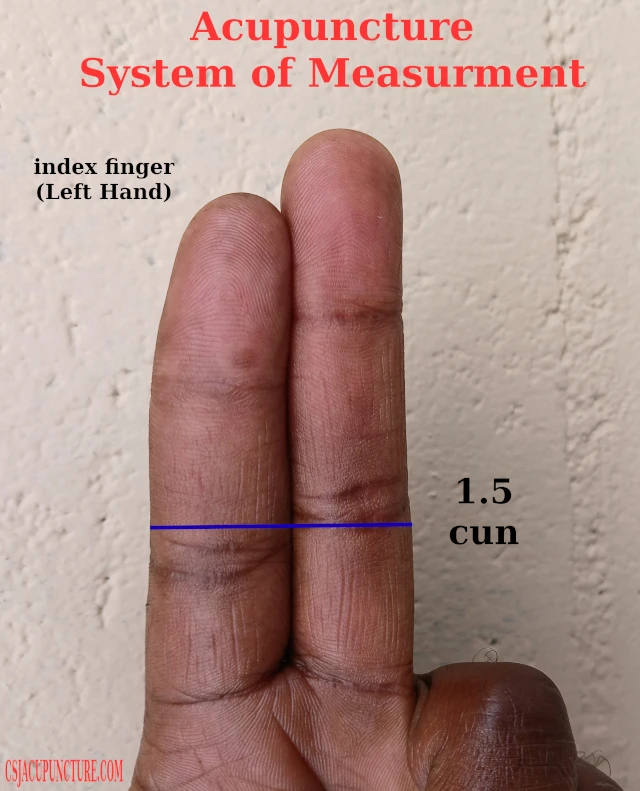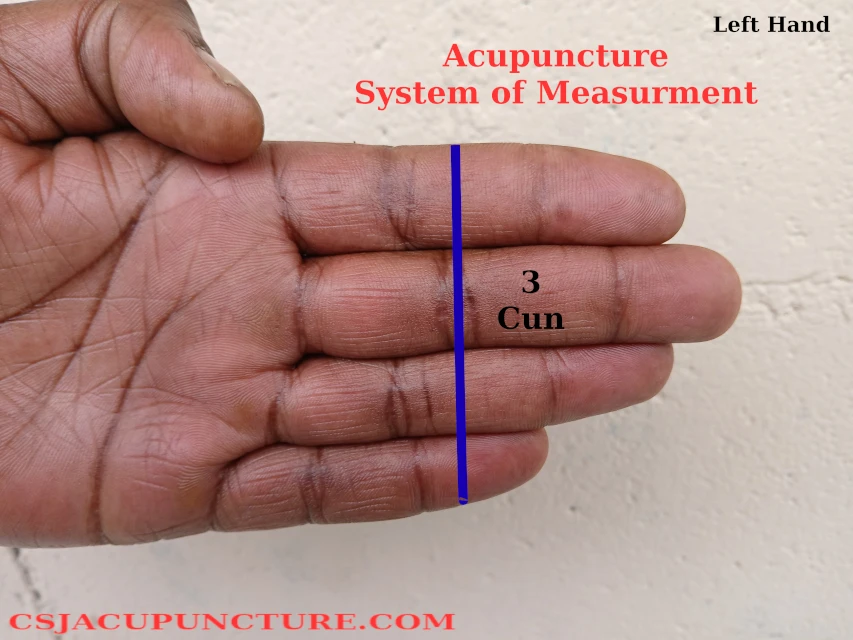This post may contain affiliate links and ads in which we may earn a small percentage of purchases.
Quick Links
In the practice of acupuncture, precise measurement is crucial to accurately find acupuncture points. How do you find acupuncture points? One of the unique measurement units used in the practice is the “cun” (pronounced “chwun”). This article will explore what a cun is, its importance, and how it adapts to individual differences in human anatomy.
Historical Context of the Cun
The concept of the cun dates back to China around 2900 BC, when pieces of jade resembling rulers were used for measurement. This historical context underscores the long-standing significance of the cun in Traditional Chinese Medicine (TCM) and its foundational role in acupuncture practices (Yang et al., 2015).
What is a “Cun” System of Units?
A cun is a unit of measurement specifically used to find acupuncture points. Recognizing the individuality of each person, TCM employs the use of cun to accommodate the varying sizes of torsos, arms, legs, and other body parts. This individualized approach ensures that acupuncture treatments are tailored to the specific needs and dimensions of each patient.
Examples of Some International System of Units (SI)
Meter (m): The unit of length.
Kilogram (kg): The unit of mass.
Second (s): The unit of time.
Pound (lb): Unit of mass (Note: Pound is actually part of the Imperial system but is included here for comparative purposes).
A clear and beginner-friendly guide covering over 400 acupuncture points, ideal for students and learners.
 View Book
View Book
A stainless-steel acupuncture pen and gua sha set for massage, reflexology, and tension relief.
 View Product
View Product
Determining the length of 1 Cun
To determine the cun, practitioners use specific anatomical landmarks on the body. The most commonly referenced measurement is the width of the crease on the thumb, specifically at the first distal metacarpophalangeal joint. Here are the primary measurements used clinically:
One Cun
Definition: The width of the thumb.
Landmark: The first distal metacarpophalangeal joint.

One and a Half Cun
Definition: The distance between the index and middle fingers when placed together.
Landmark: The first metacarpophalangeal joints of the index and middle fingers.

Three Cun
Definition: The distance from the first proximal metacarpophalangeal joint of the index finger to the end of the pinky.
Landmark: The span from the index finger’s first proximal joint to the tip of the pinky.

Clinical Application of the Cun
In clinical practice, these measurements help practitioners locate acupuncture points with precision. By using the patient’s own body as a reference, the practitioner can ensure that the acupuncture points are accurately targeted, regardless of the patient’s overall body size.
Examples of Application
One Cun: Used to locate points that are relatively close together or require fine precision.
One and a Half Cun: Helpful for points that are slightly further apart, yet still require careful placement.
Three Cun: Applied for points with a greater distance between them, ensuring accurate and effective treatment.
Ensuring Accuracy and Consistency
To maintain accuracy and consistency across different patients, practitioners learn using certain tools. This can include using flexible measuring tapes or string to adapt to individual body dimensions.
Dealing with Weight Distribution and Irregularities
As a practitioner, dealing with weight distribution and irregularities is an important aspect of providing effective acupuncture treatment. Some areas in practitioners will try to pay attention to in general include.
Assessing Weight Distribution
Evaluate the patient’s body weight distribution to understand any imbalances that may affect acupuncture point locations. Adjust the positioning of the patient during treatment to ensure comfort and accuracy.
Addressing Irregularities
Identify any anatomical irregularities, such as scoliosis or limb length discrepancies, and adjust the treatment plan accordingly. Use additional landmarks and comparative measurements to maintain precision in point location.
Customizing Treatment
Tailor the treatment approach based on the patient’s specific body structure and health conditions. Continuously monitor and adapt the treatment to ensure it meets the patient’s evolving needs.
Patient Perspective
From the patient’s perspective, understanding the use of the cun can enhance their appreciation for the personalized nature of acupuncture treatment. Patients often feel more confident and comfortable knowing that their unique body structure is being taken into account during treatment.
To summarize the “Cun” unit of measurement
The cun is an unit of measurement in acupuncture, reflecting the individualized nature of the practice and medicine. By using the body’s own landmarks, practitioners can adapt their techniques to each patient’s unique anatomy, enhancing the effectiveness and precision of acupuncture treatments. Understanding more about how acupuncture works, gives us all better insight into health.
Videos bout Cun Unit of Measument
Reference:
Yang, X., Ye, Y., Xia, Y., Wei, X., Wang, Z., Ni, H., Zhu, Y., & Xu, L. (2015). A precise and accurate acupoint location obtained on the face using consistency matrix pointwise fusion method. Journal of Traditional Chinese Medicine, 35(1), 110-116. © 2015 JTCM. All rights reserved.
More Articles:
Diverticulosis and Diverticulitis – An Acupuncturist View
Sciatica and Acupuncture: A Review of Evidence
7 Surprising Benefits of Flexibility for Your Health
Medical Disclaimer: This article is for informational and educational purposes only and is not a substitute for professional medical advice, diagnosis, or treatment. Always consult a qualified healthcare provider with any questions about a medical condition or treatment.




